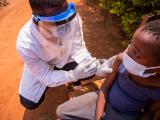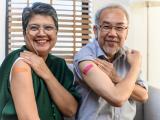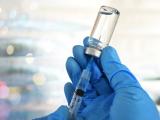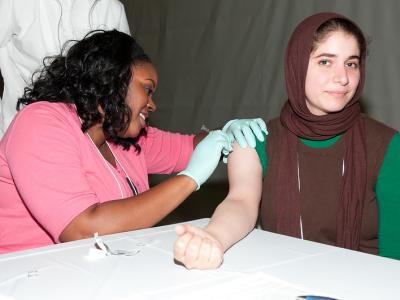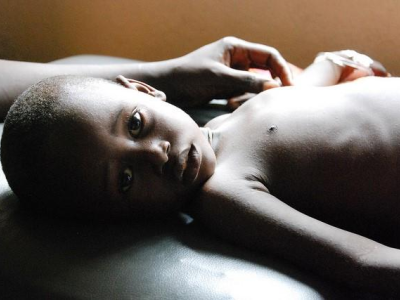A large study today from Germany shows that kids and adolescents are at the same relative risk of experiencing COVID-19 symptoms 90 days or more after acute infection as adults are, according to findings in PLOS Medicine.
And a new systematic review by researchers from the World Health Organization (WHO) in the same journal shows that likely two thirds of the world's population has SARS-CoV-2 antibodies.
About a third of kids, adults have long COVID
Though kids and adolescents have far fewer deaths or severe outcomes from COVID-19 infections compared to adults, little is known about long or post COVID symptoms in this age-group, or symptoms that persist for more than 12 weeks after acute infection.
Researchers from the Technical University of Dresden, Germany, used data from half of the German population to determine that kids and adults have the same relative risk of experiencing post COVID symptoms at 90 days following infection.
The study was based on medical records of those with COVID-19 infections confirmed by polymerase chain reaction (PCR) testing in all of 2020 in Germany. The authors compared the occurrence of pre-specified diagnoses, entered into the medical record at least 3 months post-infection, in COVID-19 patients to a control cohort of more than 750,000 people with matched age, sex and pre-existing medical conditions, without PCR-confirmed COVID-19.
The COVID group included 11,950 children and adolescents—67% of whom were younger than 12—and 145,184 adults aged 18 or older.
Kids and teens with COVID were 30% more likely than controls to have documented health problems 3 months or more after COVID-19 infection than COVID-negative controls (436.91 vs 335.98 per 1,000 person-years; incident rate ratio [IRR], 1.30; 95% confidence interval [CI], 1.25 to 1.35; P < 0.01).
Adults with COVID-19, by comparison, were 33% more likely than controls to have health problems in the same timeframe (615.82 vs 464.15 per 1,000 person-years; IRR, 1.33; 95% CI, 1.31 to 1.34, P < 0.01).
Kids' symptoms can differ from adults'
Martin Roessler, PhD, the lead author of the study, said there were significant symptom overlap among kids and adults who experienced symptoms 90 days or more after acute infection.
"We found five identical outcomes among the 10 outcomes with the highest relative risk among children/adolescents and adults. These symptoms are cough, fever, headache, malaise/fatigue/exhaustion, throat or chest pain," he told CIDRAP News.
Other symptoms were more commonly seen in adults, but not kids. Those included a loss of taste or smell, fever, and shortness of breath.
'Kids tend to get better'
Daniel Blatt, MD, a pediatric infectious disease physician at the post-COVID clinic at Norton Children's Hospital in Louisville, Kentucky, said he was not surprised by the study's findings.
"It's unclear if long COVID is the same in children and adults, in terms of pathophysiology, but it's just as real," Blatt said. Blatt, who was not involved in the study, said his clinic also collects data on children and long COVID. He said the most common symptoms reported in his patients are fatigue, anxiety, and "brain fog," followed by some shortness of breath or muscle pain.
"The good news is kids tend to get better, regardless of what intervention is needed," Blatt said. As in adult long COVID, there's no one-size-fits-all approach for pediatric long COVID patients. "Some need reassurance; some need a graduated exercise program."
Blatt said for all pediatric long COVID cases, families need to be heard that what their child is experiencing is real and serious.
Globally, two-thirds have evidence of infection, vaccination
In a new meta-analysis of seroprevalence studies, WHO researchers and their colleagues from around the world identified 965 seroprevalence studies—those testing for antibodies in the blood—that collectively included 5,346,069 participants between January 2020 and April 2022.
Among the studies, 43% were from low- to middle-income countries.
By September of 2021, 59.2% of the global population were seropositive for SARS-CoV-2 either from infection or vaccination (95% CI, 56.1% to 62.2%), "suggesting two-thirds of the global population may be SARS-CoV-2 seropositive from either vaccination or infection," according to a PLOS news release. In contrast, seroprevalence was just 7.7% in June of 2020.
"Our study provides updated estimates into 2022 and over time, which was able to highlight much steeper increases in seroprevalence due to vaccination in some regions and infection in others," said Tarik Jasarevic, a spokesperson from the WHO, in an email.
Jasarevic also said the WHO study looked at seroprevalence by region, with high-income countries in the Americas and Europe having over 90% seroprevalence by early 2022. Jasarevic said some of the biggest jumps in those regions came during the Omicron wave of last winter.
"Our results show that seroprevalence has increased considerably over time, particularly from late 2021, due to mainly infection in some regions and vaccination in others," the authors concluded. "Nevertheless there is regional variation and over one-third of the global population are seronegative to the SARS-CoV-2 virus."




